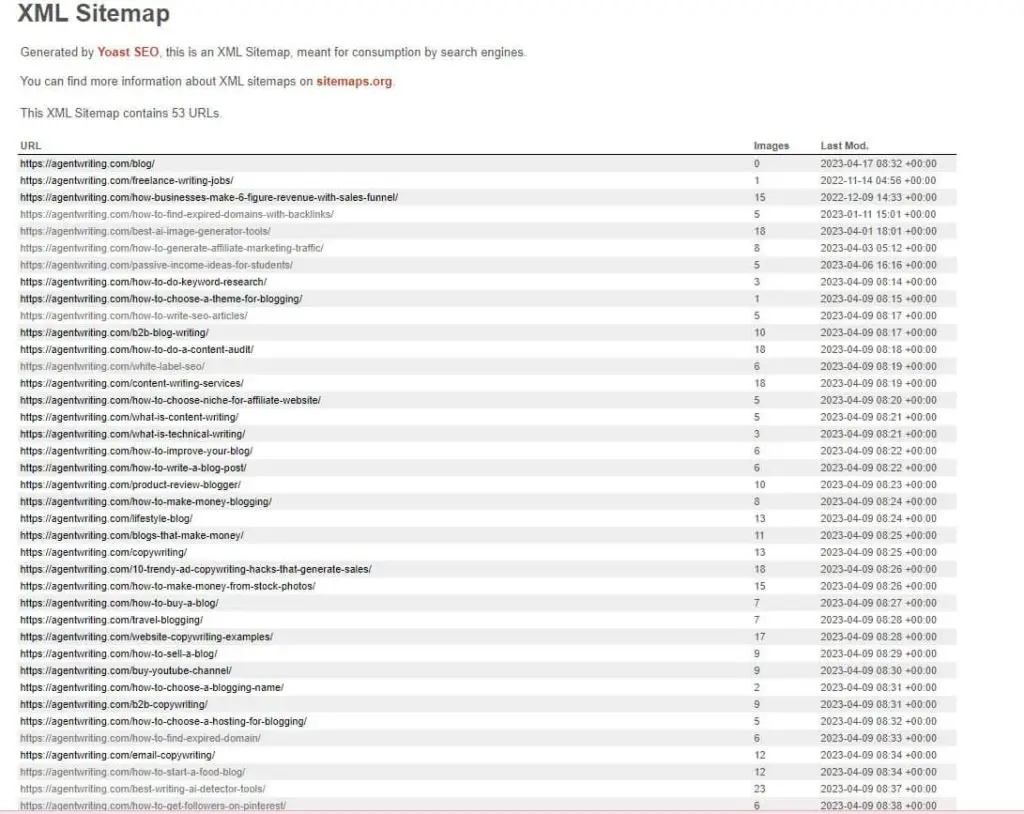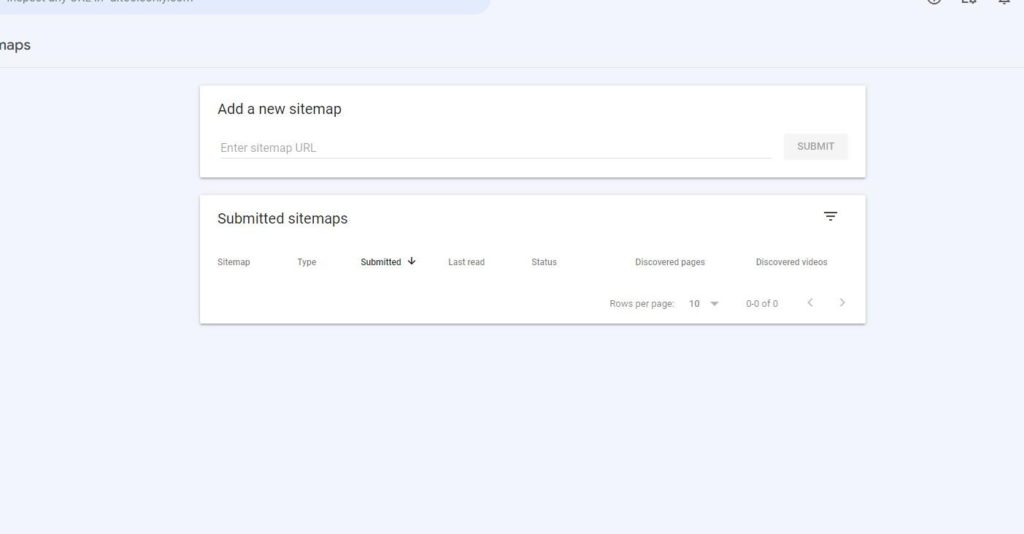Welcome to the world of Technical SEO.
Technical SEO is the process of improving your website’s access and ranking on search engine results pages (SERPs) by tweaking its technical parts. Technical SEO is concerned with the structure of your website and whether or not search engines can successfully crawl, index, and interpret its content.
Here, I’ll explain the technical principles of SEO in detail and walk you through the process of making your website search engine friendly.
We will cover page load times and mobile friendliness to schema markup and XML sitemaps. Then, let’s dive in!
What is Technical SEO
The term “technical SEO” is used to describe the process of enhancing a website’s performance in search engine results pages (SERPs). Technical SEO includes fixing the technical details behind the scenes.
Technical SEO is different from traditional SEO, such as On-page optimization and link-building.
Technical SEO ensures that search engines can easily crawl and index your website’s content. This is just as important as the content itself and the links pointing to it. In short, search engines may not rank or even include your website in their results if it is not technically optimized.
The terms “site speed,” “mobile-friendliness,” “SSL certificate,” “structured data markup,” “XML sitemaps,” “robots.txt,” “canonicalization,” and “hreflang tags” all refer to typical features of Technical SEO.
Your website’s search engine rankings, user experience, and visitor numbers can all benefit from these technical tweaks.
Technical SEO tasks include the followings:
- Submitting your sitemap to Google
- Increase your website’s speed
- SEO-friendly site structure
- Making your website user-friendly for mobile and tablets.
- Resolving duplicate content issues
- Optimizing your website’s images and videos
- Implementing schema markup
- Checking and optimizing your robots.txt file
- Implementing canonical tags to prevent duplicate content issues
- Fixing broken links and redirects
- And more..
Why Technical SEO is so Crucial for Websites?
Technical SEO ensures search engines can crawl, index, and interpret your website’s content. Traditional SEO emphasizes content and links. This means that without technological optimization, search engines may be unable to understand your content, resulting in low rankings or exclusion from search results.
Here are some of the most important aspects of technical SEO:
- Better search engine visibility: Technical SEO helps to improve your website’s visibility. Many technical factors impact your ranking, and technical SEO resolves those.
- Enhanced user experience: Search engines like Google focus on user experience. By doing technical SEO, you can improve the page experience. For example, you can increase your page ranking by optimizing the mobile friendliness of your page.
- Increased site speed: Site speed is a key ranking factor. If your site does not load under 3 seconds, there is a high chance people will not visit your site, and search engines won’t rank your page.
- Better Image Search Visibility: People use image search for many reasons. If you optimize your images through technical SEO, your site will be visible when people perform an image search. That will bring additional traffic to your website.
These are just some of the important benefits of technical SEO. Now let’s move on and talk in detail.
Fundamental of Technical SEO – Understanding Crawling
Crawling is an important part of search engine optimization (SEO). Crawling means automated bots used by search engines to scan and index the pages of your website. These bots are also known as spiders or crawlers.
If you want to improve the visibility of your website in search engines, you need to learn how crawling works to optimize your website’s technological architecture.
How Crawling Works
When you add a new blog to your website, you have to tell the crawler that you have added a new post. The crawlers used by search engines must first discover it and index it. If your post is not indexed, that will not appear in the search result.
What is the best way to help crawlers to scan your site? The best way is to add your post to the home page or blog section.
Moreover, you should use tools like Google search console and tell crawlers that you have published new content.
The Importance of Crawling
It is possible that the pages of your website will not be indexed on search engines if crawling is not performed. As a result, your page won’t appear in the search result. You can boost the ranking of your website in the search engines and draw in more visitors to your website by making sure that it is easy for crawlers to navigate it.
Improve the Crawlibility of your Website with SEO-Friendly Site Architecture
SEO-friendly site structure is the first step to improving the crawl ability of your website. What does that mean? It means you have to design your website in a way that search engines can find your page easily.
Here is an example of how you should design your website:

Look at the above image. After the home page comes category pages and then individual pages.
If you have subcategories, you can put them under the category page. But it is better to keep that as simple as possible.
The main concept is to ensure your site is easy to understand and easy to navigate. Use simple and descriptive web addresses that describe what each page is about. Put your most important pages at the top of the structure so search engines can understand which pages are most important.
Submit Site Map to Google
Having a sitemap can greatly improve Google’s ability to discover your pages.
Sitemaps are often presented in XML format and include a list of your site’s most important pages. This lets search engines know what pages you have and where they are.
If your site has a lot of pages or if they aren’t linked to each other very well, this can be quite helpful.
Here is a screenshot of our website’s sitemap

The address of your sitemap looks like this:
yoursite.com/sitemap.xml
yoursite.com/sitemap_index.xml
How to Submit a Site Map?
Before you submit a sitemap, you have to generate one. If you are using WordPress, the process is pretty straightforward. All you have to do is install an SEO plugin, which is highly recommended for any kind of website.
Yoast and RankMath are the most downloaded SEO plugins right now.
If you are using Yoast, go to the settings.

Write “ sitemap” in the search bar and click on XML sitemap

Click on view sitemap and copy the URL.

If you are using RankMath, go to the Sitemap Settings.

Click on the Setup Wizard.

Select Easy and click on Start Wizard.
Follow the instructions and click on next.
Your sitemap will be ready.
The next step is to add the sitemap to your Google Search Console.
Go to your Google Search Console. (If you did not set up a search console, you have to set that up and add a property)
Click on the sitemap.

You will see a window like this

Copy and paste your sitemap address, and a success message will appear.
What is Indexing?
When a search engine crawls your website, it tries to assess and understand the page’s content.
The found information is subsequently added to the search engine’s search index, a massive database containing billions of web pages.
Your site’s pages need to be indexed by search engines if you want to show up in search results.
Performing a “site:” search is the quickest approach to see if your pages have been indexed. To see how many pages of your site “example.com” Google has indexed, put site:www.example.com into the search bar.
By utilizing the “site:” search operator, you may see if a specific page has been indexed.
Check Indexing
Now, you have set up your website for indexing and show your content while people run a search query. But how will you notice which content is indexed and which is not? Yes, you can check them using the “site:” parameter but here is a more convenient way.
Go to your search console and click on “pages.”

You will see a new window and can easily find out which pages are indexed and which are not.

Pro Tip: If not necessary, don’t use the tags for your posts.
No Index and Canonicalization
Using the “noindex” tag, you can prevent a page from being indexed by search engines. This is helpful for thank you pages and other pages with duplicate content that don’t need to rank in search engine results. Using the “noindex” tag, you can ensure that search engines prioritize your site’s most important pages and save crawling resources for them.
Canonicalization, on the other hand, is the way to declare a page of your website to index the page has multiple versions. This is quite helpful for search engines to understand which page to index and show.
Technical SEO Best Practices
Regularly Audit your Website
Regular site audits will help you spot any technical issues that may be hurting your search engine results and get them fixed. Technical problems like broken links, duplicate content, missing meta tags, and more can be discovered through site audits. There are many different tools to conduct a site audit. But my recommendation will be to use Ahref or SemRush to get the best results. Also, use your Google search console for indexing issues.
Increase the Speed of Your Website
Improve your search engine rankings by making your site load faster. A slow-loading website can be frustrating for visitors and detrimental to search engine rankings. Here are some key factors that will increase the speed of your website:
- Compress your Image: Images are one of the big culprits that make your site slow. So, you MUST compress your image before uploading. Use Photoshop or TinyPNG to compress images before uploading images. If you use WordPress, use a plugin to enable the lazy loading feature.
- HTTP requests and code minification is other ways to increase your website’s speed. Use a caching plugin also.
- Use a CDN to serve people faster if you have a large audience. You can use Cloudflare for a free CDN service.
Note: Use GTmatrix, and Google Page insight to check the speed of your website.
Use HTTPS
This secure protocol encrypts data sent between a user’s browser and your website. Using HTTPS encrypts your website and gives it a modest SEO boost. Google has acknowledged that HTTPS affects rankings.
Optimize for Mobile
A website must be mobile-friendly because mobile devices account for over half of all internet traffic. To enhance your website’s mobile user experience, use responsive design, AMP pages, and mobile-first indexing.
Note: AMP is not ideal for affiliate websites. But if you are running a service website, you can use an amp or serve both the amp and the regular version.
Implement Structured Data
Have you ever noticed that when you run a query, some pages show star ratings and customer feedback in the SERP? Those are structured data. Structured data improves the chance to get click on the content.
To implement structured data, you must add code to your website’s pages so that search engines can read and index the information presented there. Structured data implementation options include schema.org markup, JSON-LD, and microformats.
If you are not familiar with coding, you may need expert assistance to do so. However, if you use WordPress, the process is pretty simple. You can use Yoast or RankMath Pro version to enable the structured data option.
Find and Fix Broken Links
Links on a website that no longer lead anywhere are known as broken links or dead links. Clicking on a broken link will result in an error message, which is frustrating for the user and bad for search engine optimization.
To ensure your website is user- and search-engine-friendly, repairing broken links is a crucial aspect of Technical SEO.
You can use SEO tools like Ahref’s free broken link checker to find broken links on a page.
Use Alt Text for Images
Content is not the only factor that can bring you visitors. Many people use image search for many reasons. If you use alt text that tells the search engine about the image and search engines shows that image when someone searches for that specific term.
Use short and Descriptive URL
Always try to use descriptive URLs so that search engines can understand the topic of the page. Using the keyword in your URL is a commonly used practice among SEO experts, and it works. But don’t use too long URLs.
Wrapping Up
Technical SEO is a big topic, and you will need first-hand experience to learn the technique. Sometimes, this can feel overwhelming. But don’t worry; you will get used to it day by day. I mentioned the basic technical SEO processes here, and if you follow these steps, you should be OK with your website.
Keep in mind that technical SEO is only one part of the puzzle that is increasing your site’s visibility in search engines. Proper Keyword research, internal linking, Off-page optimization via link building, and social media marketing are also crucial, in addition to on-page optimization, content production, and so on.





